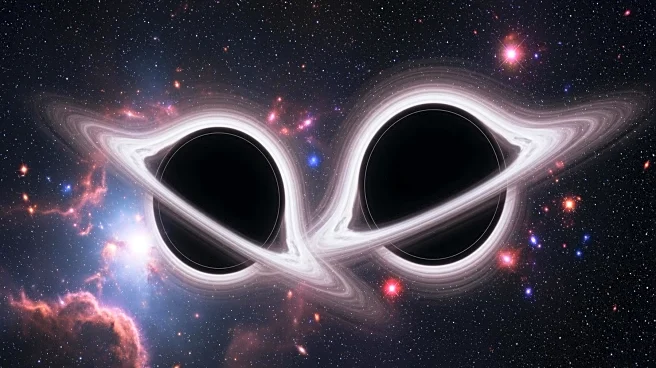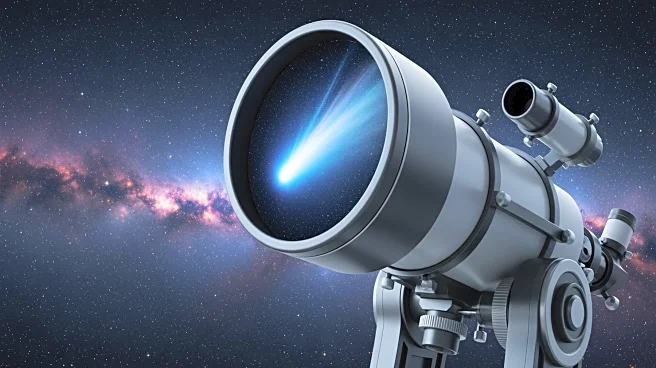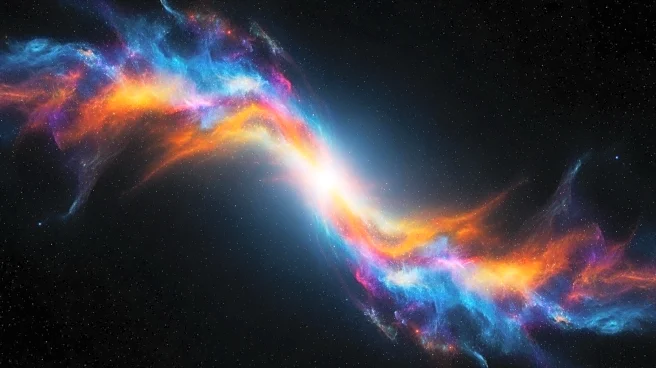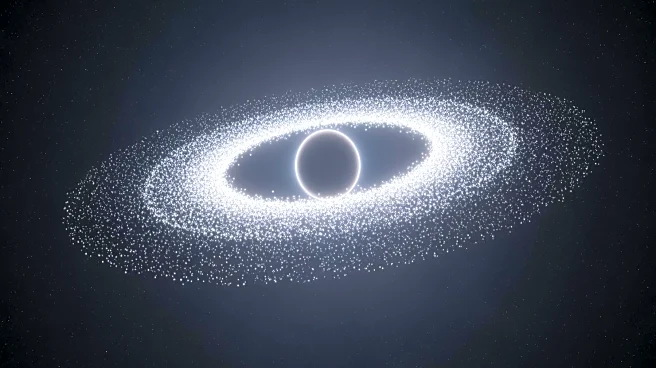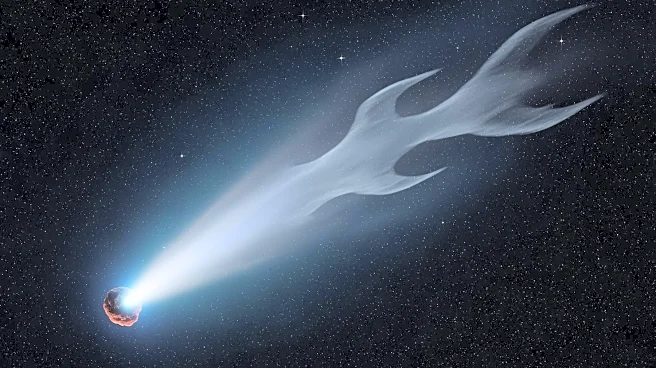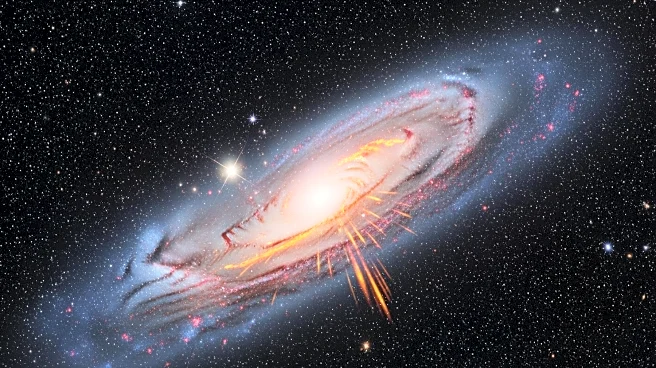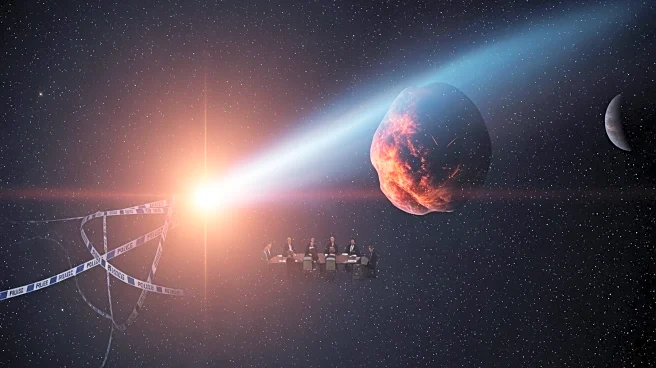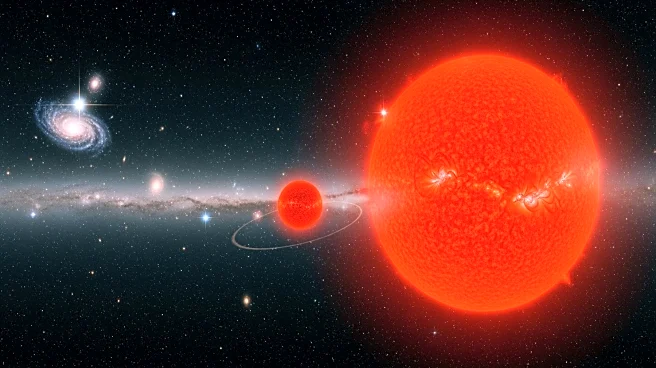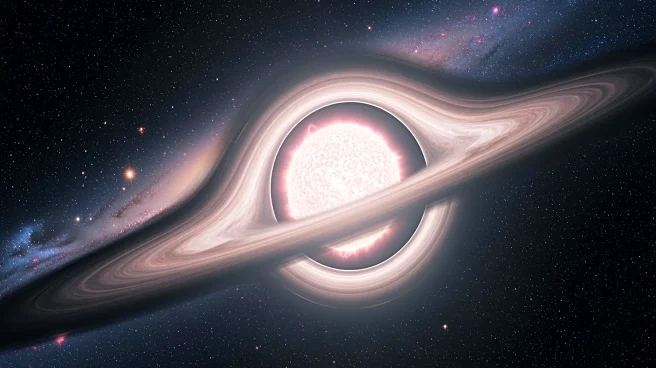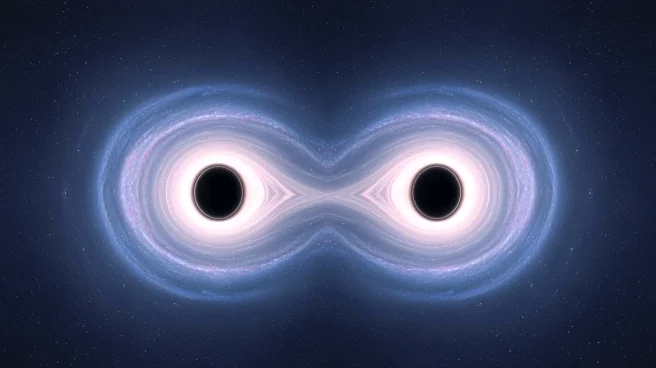What's Happening?
For the first time, astronomers have captured an image of two black holes orbiting each other in the quasar OJ287, located 4 billion light-years away in the constellation Cancer. The research, led by Mauri J. Valtonen from the Tuorla Observatory and the University
of Turku, involved an international team using high-resolution imaging from a Very Long Baseline Interferometer project. The discovery confirms a 40-year-old theory that co-orbiting black holes exist within quasars. The primary black hole in the system is estimated to be 18.35 billion solar masses, while the secondary is 150 million solar masses.
Why It's Important?
This discovery resolves a long-standing mystery about the existence of binary black holes in quasars, providing new insights into the dynamics of these massive cosmic structures. Understanding the behavior of such systems can enhance knowledge of gravitational waves and the evolution of galaxies. The ability to image these black holes also demonstrates the advancements in astronomical technology and techniques, paving the way for further discoveries in the field of astrophysics.
What's Next?
Future observations will focus on the newly identified jet emanating from the secondary black hole, which has a twisted profile due to its rapid orbit around the primary. This will help astronomers understand the interactions between the black holes and their environment. The study also opens up possibilities for further research into the behavior of binary black holes and their impact on the surrounding space.
